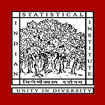Fundamentals of rough-fuzzy clustering and its application in bioinformatics
Document Type
Book Chapter
Publication Title
Pattern Recognition and Big Data
Abstract
Cluster analysis is a technique that divides a given data set into a set of clusters in such a way that two objects from the same cluster are as similar as possible and the objects from different clusters are as dissimilar as possible. In this regard, a hybrid unsupervised learning algorithm, termed as rough-fuzzy c-means, is presented in this chapter. It comprises a judicious integration of the principles of rough sets and fuzzy sets. While the concept of lower and upper approximations of rough sets deals with uncertainty, vagueness, and incompleteness in class definition, the membership function of fuzzy sets enables efficient handling of overlapping partitions. The concept of crisp lower approximation and fuzzy boundary of a class, introduced in rough-fuzzy c-means, enables efficient selection of cluster prototypes. The effectiveness of the rough-fuzzy clustering algorithm, along with a comparison with other clustering algorithms, is demonstrated on grouping functionally similar genes from microarray data, identification of co-expressed microRNAs, and segmentation of brain magnetic resonance images using standard validity indices.
First Page
513
Last Page
543
DOI
10.1142/9789813144552_0015
Publication Date
12-15-2016
Recommended Citation
Maji, Pradipta and Paul, Sushmita, "Fundamentals of rough-fuzzy clustering and its application in bioinformatics" (2016). Book Chapters. 237.
https://digitalcommons.isical.ac.in/book-chapters/237

